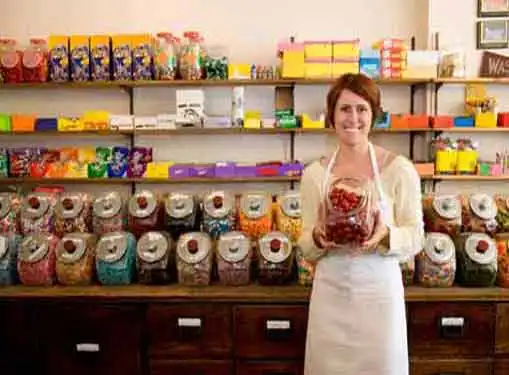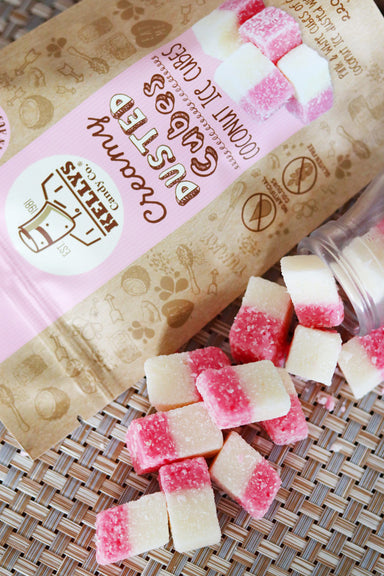Things about I Luv Candi
Things about I Luv Candi
Blog Article
I Luv Candi Fundamentals Explained
Table of ContentsI Luv Candi for DummiesThe 10-Minute Rule for I Luv CandiI Luv Candi Things To Know Before You Get ThisMore About I Luv CandiNot known Facts About I Luv Candi
We have actually prepared a great deal of organization plans for this type of task. Here are the common client segments. Client Section Summary Preferences Just How to Discover Them Children Youthful consumers aged 4-12 Colorful candies, gummy bears, lollipops Companion with neighborhood schools, host kid-friendly events Teenagers Teens aged 13-19 Sour sweets, uniqueness items, stylish deals with Engage on social media, collaborate with influencers Parents Grownups with little ones Organic and healthier choices, sentimental sweets Deal family-friendly promotions, promote in parenting publications Students College and university students Energy-boosting candies, budget friendly snacks Companion with neighboring campuses, promote during exam durations Present Buyers Individuals trying to find presents Premium chocolates, present baskets Produce attractive displays, use personalized present choices In assessing the economic characteristics within our sweet store, we've discovered that customers typically invest.Observations indicate that a common customer frequents the store. Certain durations, such as holidays and special celebrations, see a surge in repeat brows through, whereas, during off-season months, the frequency might dwindle. da bomb. Determining the lifetime worth of an ordinary customer at the candy shop, we estimate it to be
With these consider consideration, we can deduce that the average income per client, over the training course of a year, hovers. This figure is essential in strategizing business improvements, advertising endeavors, and client retention tactics.(Please note: the numbers defined over function as general estimates and might not exactly reflect the metrics of your special organization scenario - https://i-luv-candi.jimdosite.com/.) It's something to desire when you're writing the business plan for your sweet shop. One of the most lucrative customers for a sweet store are typically households with children.
This group often tends to make regular acquisitions, raising the shop's profits. To target and attract them, the candy store can employ vibrant and spirited advertising approaches, such as vibrant displays, appealing promos, and possibly even holding kid-friendly occasions or workshops. Creating an inviting and family-friendly atmosphere within the store can additionally boost the general experience.
How I Luv Candi can Save You Time, Stress, and Money.
You can also estimate your own profits by using different presumptions with our economic prepare for a candy store. Typical month-to-month income: $2,000 This type of sweet-shop is usually a tiny, family-run company, possibly known to locals however not drawing in multitudes of tourists or passersby. The shop might use an option of common sweets and a few homemade deals with.
The store doesn't typically lug unusual or expensive items, focusing rather on affordable deals with in order to keep routine sales. Thinking an ordinary spending of $5 per customer and around 400 customers monthly, the regular monthly revenue for this sweet-shop would certainly be about. Typical regular monthly profits: $20,000 This sweet-shop benefits from its tactical area in an active urban location, bring in a lot of customers looking for wonderful extravagances as they shop.
In enhancement to its diverse sweet choice, this shop could also offer relevant products like present baskets, candy arrangements, and novelty products, providing numerous revenue streams - da bomb australia. The store's place needs a higher allocate rent and staffing yet causes greater sales volume. With an estimated typical investing of $10 per customer and regarding 2,000 clients each month, this store might create
How I Luv Candi can Save You Time, Stress, and Money.
Found in a major city and visitor location, it's a big facility, typically topped multiple floorings and possibly component of a nationwide or international chain. The shop uses an immense variety of candies, including unique and limited-edition products, and merchandise like well-known garments and devices. It's not just a store; it's a destination.
These attractions help to draw thousands of site visitors, significantly enhancing prospective sales. The operational expenses for this kind of store are substantial due to the place, size, team, and includes offered. The high foot website traffic and ordinary investing can lead to significant profits. Thinking an average acquisition of $20 per consumer and around 2,500 consumers monthly, this front runner shop might achieve.
Category Instances of Costs Ordinary Regular Monthly Expense (Range in $) Tips to Lower Expenses Rental Fee and Utilities Shop rental fee, electrical energy, water, gas $1,500 - $3,500 Consider a smaller sized location, work out rent, and utilize energy-efficient lighting and devices. Supply Sweet, treats, packaging materials $2,000 - $5,000 Optimize supply monitoring to lower waste and track popular products to stay clear of overstocking.
Advertising And Marketing Printed matter, on-line ads, promos $500 - $1,500 Focus on economical electronic advertising and make use of social media sites platforms completely free promotion. carobana. Insurance policy Service liability insurance $100 - $300 Look around for affordable insurance prices and consider bundling plans. Tools and Maintenance Money registers, display racks, repair services $200 - $600 Buy used devices when feasible and execute normal maintenance to expand equipment life expectancy
The Single Strategy To Use For I Luv Candi
Charge Card Handling Fees Charges for processing card settlements $100 - $300 Negotiate reduced processing charges with settlement cpus or discover flat-rate options. Miscellaneous Office products, cleansing products $100 - $300 Acquire in bulk and look for discount rates on materials. A sweet-shop ends up being profitable when its overall revenue surpasses its overall set costs.

A big, well-located candy shop would certainly have a greater breakeven factor than a tiny shop that doesn't need much profits to cover their expenses. Curious regarding the profitability of your candy store? Experiment with our user-friendly economic plan crafted for candy shops. Simply input your very own presumptions, and it will certainly help you determine the quantity you need to gain in order to run a profitable company.
I Luv Candi for Beginners

Financial slumps that minimize consumer costs can affect candy store sales and success, making it crucial for candy shops to manage their expenditures and adapt to changing market problems to stay successful. These dangers are typically included in the SWOT evaluation for a sweet-shop. Gross margins and net margins webpage are essential signs made use of to gauge the success of a sweet store organization.
Basically, it's the profit remaining after subtracting prices directly relevant to the candy stock, such as purchase costs from providers, production prices (if the candies are homemade), and team incomes for those involved in production or sales. Web margin, conversely, variables in all the expenses the sweet store incurs, including indirect costs like administrative expenditures, advertising, lease, and taxes.
Sweet stores generally have an average gross margin.For instance, if your sweet store gains $15,000 each month, your gross revenue would be roughly 60% x $15,000 = $9,000. Allow's show this with an example. Consider a candy shop that offered 1,000 candy bars, with each bar valued at $2, making the overall income $2,000. The shop sustains expenses such as buying the sweets, utilities, and salaries for sales team.
Report this page